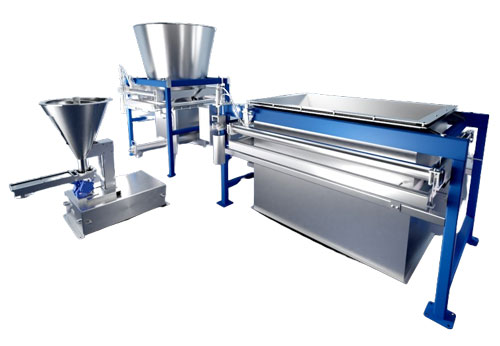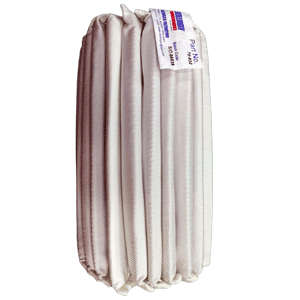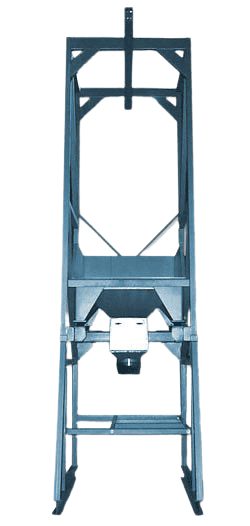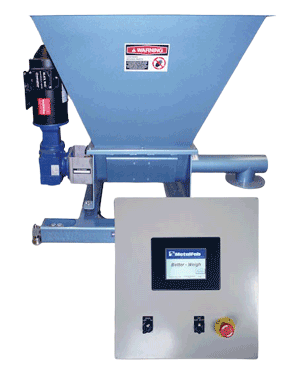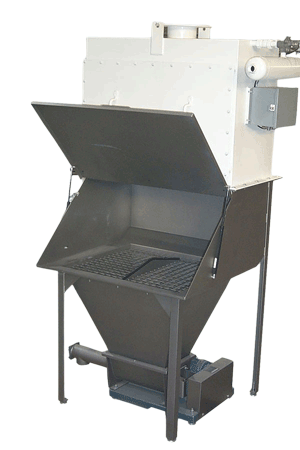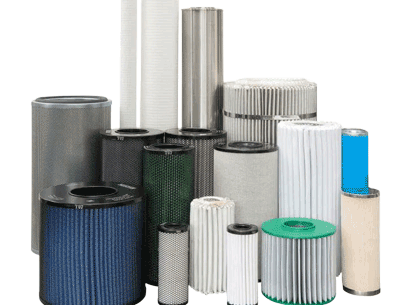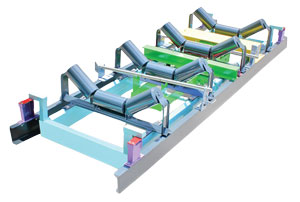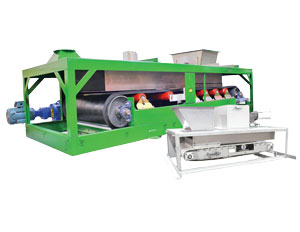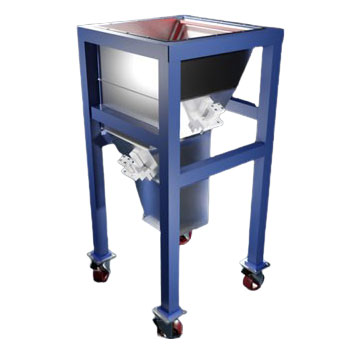LOSS IN WEIGHT VIBRATORY FEEDERS & SCREW FEEDERS
FMSS Mass-Counter Balance Scale Technology
Exclusive and patented “FMSS” Mass-Counter Balance Scale Technology and “Intelligent” programmable controls provide superior accuracy and reliability.
Exclusive Cable Scale Design
For higher capacity metering, nothing can touch the unique THAYER Cable Scale. Stable and responsive, this design carries forward all of our well known benefits: mass counterbalance of dead load, immunity to load placement (Force Vector Isolation), high accuracy and repeatability. All in a rugged, high tech structure.
Long Lasting and Reliable Load Cell
Proprietary load cell design for long term stability and accuracy under the most demanding applications, with a resolution of 1:1,000,000 and a 15 year guarantee.
Automatic Test Weight Calibration
The unique Thayer Scale ATWL (Automatic Test Weight Lifter) assures minimal downtime for calibration checks. When automatic calibration check is carried out via a remote computer or PC, human intervention is not required. Eliminates operator error and institutionalizes calibration checks at regular time intervals for compliance with QA programs. Eliminates risk of operator injury from lifting and placing test weights. Mechanically exercises scale. Actually verifies load cell operation, unlike an electronic shunt calibration.
Patented Spiralator™ for difficult materials
The patented Spiralator™ feeder, that incorporates a slowly rotating element in the hopper against the action of gravity, expands the application range of vibratory feeders to include either difficult interlocking particle shapes, or cohesive and adhesive powders.
Patented Nodal-Membrane option for adhering materials
The patented Nodal-Membrane feedrs produce transverse, multiple-node standing (vibration) waves in an elastomeric membrane which sheds adhering materials by magnifying the altermating tensile and compressive surface strains at the conveying surface.
Easy Material Clean Out / Changeover
Quick release hand operated clamps permit quick removal of feeding trays for cleaning and/or quick changeovers of material-dedicated trays used where cross contamination must be avoided.
Optional Rotating Hopper
Optional rotating hopper speeds material change-out, makes cleaning even easier. Ideal for batching system use and to self-empty remaining material away from process. Available for both screw and vibratory feeder models.
The Thayer flexure suspension system (Patented) with its linear variable displacement transducer utilizes a series of high tensile strength steel flexures coupled to summing levers to accurately focus force to a tension type load sensor. Force measurement is decoupled from load position and mass counterbalance to accurately measure net material weight.
Design principle:
Load is opposed by tension forces in corner flexures (A). Tension forces in corner flexures produce moments about fulcrum flexures (B). Moment of left hand lever is transferred to right hand lever via equalizing flexure (C). Summed moment in right hand lever is therefore proportional to load irrespective of load position. Moment in right hand lever is opposed by tension in link flexure (D). Tension in link flexures (D) produces a moment in the final lever. Fulcrum flexure (E) transfers force to displacement transducer.
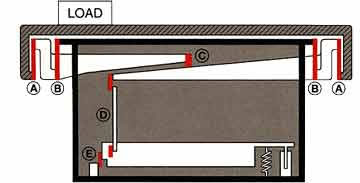
Features:
- Sustained sensitivity without maintenance.
- Cancels horizontal force vectors.
- Nulls out heavy tare loads.
- Immune to off center loading effects.
- 1000% over load capacity
The Thayer cable suspension system (Patented) utilizes a series of stainless steel cables in conjunction with Torque Transfer Tubes to accurately focus force to a tension type load sensor. Force measurement is decoupled from load position and mass counterbalanced to accurately measure net material weight.
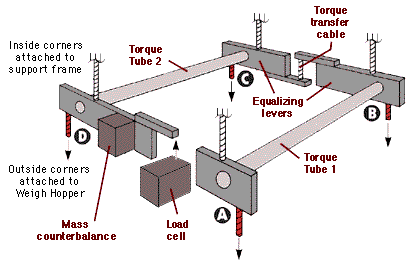
Design principle:
The sum of the torques generated by each pair of corner cables is proportional to scale loading. Torque A is added to Torque B via Torque Tube#1. The sum of these is added to Torque C via the torque transfer cable and equalizing levers. This sum is then added to Torque D via torque Tube#2. The weight on the load sensor extension lever is selected and positioned to oppose that portion of the summed torques attributable to tare. The remaining torque value is proportional to net loading and is opposed by the load sensor.
Features:
- Accurately measures load regardless of load position.
- Immune to support structure deflections and process vibrations.
- Feeder may be frequently moved without scale damage or re-calibration.
- Inherently self aligning to gravity.
- Nulls out heavy tare loads.
- Scale may be suspended from above or supported from below.

